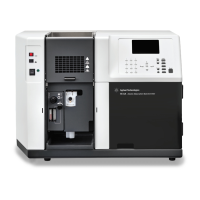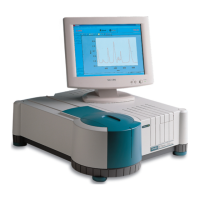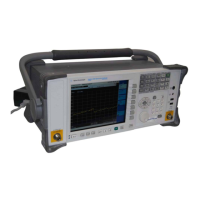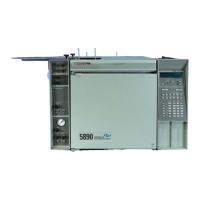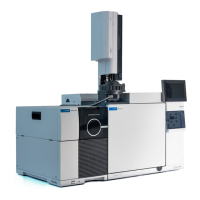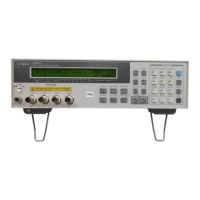General Troubleshooting 2
5977B Series MSD Troubleshooting and Maintenance Manual 47
• Electron multiplier is nearing the end of its useful lifetime
• Ground loop problems
Relative abundance of m/z 502 is less than 3%
Autotune should give an m/z 502 relative abundance greater than 3%. The
relative abundance of m/z 502 can, however, vary a great deal depending on
column flow, ion source temperature, and other variables. As long as relative
abundance is above 3%, the stability of the relative abundance is more
important than the absolute value. If you observe significant changes in the
relative abundance of m/z 502 for a fixed set of operating parameters, there
may be a problem. The charts in the MSD Data Acquisition software are useful
for identifying changes.
Low relative abundance of m/z 502 should not be confused with low absolute
abundances at high masses. Sensitivity at high masses can be excellent even if
the relative abundance of m/z 502 is near 3%. If your MSD produces low
absolute abundances at high masses, refer to the symptom High mass
sensitivity is poor.
Tune programs other than autotune have different relative abundance targets.
The DFTPP and BFB target tune programs tune the MSD to achieve about a
0.8% ratio of m/z 502/69.
• Tune program/tune file has a different relative abundance target
(3% only applies to Autotune)
• Not enough time for the MSD to warm up and pump down
• Analyzer chamber pressure is too high
• Ion source temperature is too high
• Column (carrier gas) flow is too high
• Poor filament operation
• Dirty ion source
• Air leak
• Incorrect DC polarity on the quadrupole mass filter
Spectra look different from those acquired with other MSDs
Ion ratios are different from those in older models MSDs. This is due to the
HED detector, and is normal.
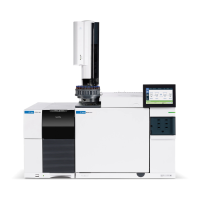
